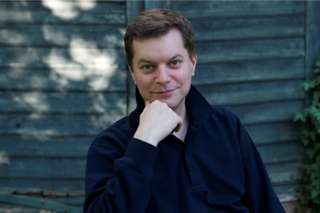|
Back
Unfinished Symphony? New York
David Geffen Hall, Lincoln Center
04/19/2018 - & April 21, 24*, 2018
Wolfgang Amadeus Mozart: Piano Concerto No. 22 in E-flat major, KV482
Anton Bruckner: Symphony No. 9 in D minor
Till Fellner (piano)
New York Philharmonic, Christoph Eschenbach (conductor)

T. Fellner (© Gabriela Brandenstein)
“If God does not spare me to finish this Symphony, He must take responsibility for its incompleteness.”
Anton Bruckner
“He would never win the race to the Moon; but his would be the first of all man’s ships to set sail on the long journey to the stars.”
Arthur C. Clarke, The Wind From the Sun
Recently I was perusing some old records of the New York Philharmonic when I stumbled across this rather odd item from the year 1950:
BRUCKNER – Symphony No. 9, D minor (“Unfinished”)
This round of performances led by Bruno Walter was probably quite electrifying, but why the appellation “Unfinished” listed on the same page as “Eroica”, “Pastoral” and “Emperor” (Schubert was entered on another page)? Clearly the implication is that the Bruckner is incomplete, however I maintain that this is incorrect. Some conductors have attempted to “repair the damage”, for example Riccardo Muti ended the Chicago season two years ago by programming the symphony followed by the same composer’s Te Deum as an ersatz finale. I have been criticized for not understanding Catholic doctrine (I plead guilty), but for me the ending notes of the final third movement, sung by horns and Wagner tubas, are as close to Heaven as any of us will ever experience. Please, please stop tinkering and let this symphony glorify in peace!
The house was completely full this night as even the top balconies had all of their seats occupied when the young Austrian Till Fellner came out to intone the 22nd Concerto of Mozart. He immediately established a benchmark of elegance and a strong control of dynamics combining delicacy and power. Maestro Eschenbach kept his instrumental forces in check and there were moments of exceptional orchestral color such as the duet between flute and bassoon in the Andante. The bucolic theme of the final movement was developed joyously in a very sophisticated manner. This particular merger of soloist and conductor – himself a world-class pianist – came off close to perfectly. All seemed right for an engrossing performance of the Bruckner.
After intermission it was immediately obvious that the symphony would upstage the fine jewel of the concerto. At least sixty more musicians crowded that stage and were arranged in the most powerful of seating plans. With the celli up front stage left and the principal associate concertmaster Sheryl Staples in the chair – it was notable that all of the first violins were women – this ensemble seemed ready for the massive architecture that is late Bruckner.
I spent quite a bit of time in Houston during the late 1990’s and our hometown conductor at Jesse Jones Hall was maestro Eschenbach. I was never a big fan as he spent too much of his energies on making us all aware of which passages were deserving of special attention. Unfortunately, he has not changed that much over time. Eschenbach took what he presumed to be the most dramatic phrases of the first movement misterioso and stretched them for effect, literally composing from the podium. Those of us who strongly admire Bruckner as a composer were not happy campers with this unauthorized assault of substitution.
The great struggle near the end of the first movement is, for me, the most eloquent passage in all of music, nay, in all of art, the clarinets bravely fighting against the bulk of the ensemble, bending but not breaking in this terrible hurricane. Here the balance was just a tad off and the painstakingly created moment was absorbed by the sheer strength of the huge orchestra. A golden moment wasted.
The Scherzo was the best movement, primarily because it was presented in a straightforward manner. The infectious rhythm does not allow for too much interference by the conductor and so the forces of the giant philharmonic let loose were more than up for the task. The final movement – yes the final one – was the most evocative of the composer’s beloved organ but was the undoing of the brass that seemed a tad tired, producing many near misses of essential notes. The ensemble as a whole became more out of tune as the movement went along and it was somehow fitting that the brass section as a whole flubbed the final note. There did not appear to be any microphones streaming down from the rafters so perhaps this performance was not recorded. If so that would be a blessing.
Fred Kirshnit
|